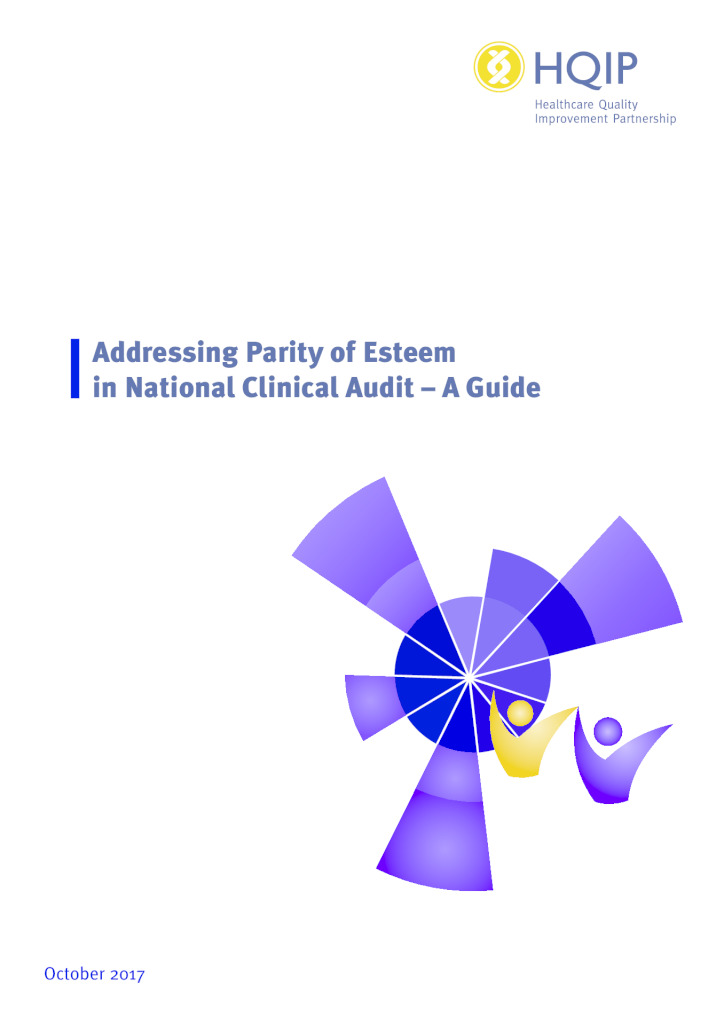Addressing Parity of Esteem in National Clinical Audit – A Guide
The aim of this guide is to offer practical recommendations for how to address parity of esteem in the planning, execution and report writing of national clinical audits, in pursuit of optimal patient outcomes. It includes an exploration of the term parity of esteem and its relevance to national clinical audits in the national healthcare context, including reports, policies, guidelines and commissioning incentives.
Appendices are also available (see below) to provide further support in implementing the suggestions in the main body of the guide. These include a selection of national literature from a wide variety of relevant organisations, as well as national commissioning incentives and examples of where integrated physical and mental healthcare has already been addressed in the national clinical audits managed by HQIP.
The guide is designed so that providers of national clinical audits can use the main text and appendices as and when needed, for inspiration and to overcome barriers that may arise as to ‘how’ and ‘why’ parity of esteem should be addressed.
To find out more about HQIP’s mental health-related programmes click here


